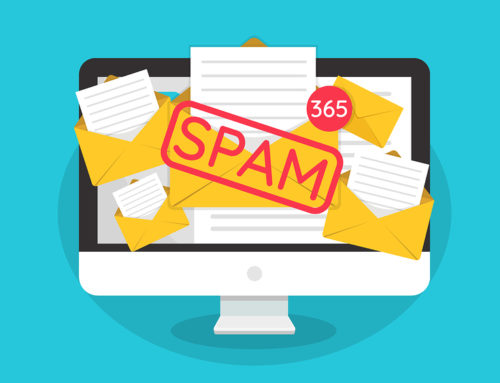
Gretchen Barry
We often talk about how your thank yous may be the most important communication you send. Below you’ll find some of the most common errors you make when thanking donors who gave online. ~Kristina
Guest Post by Gretchen Barry of NonprofitEasy
Online fundraising may no longer be the wild west of the nonprofit community, but it still carries with it the aura of an unsettled frontier. Online revenue has risen, and is still rising. Industry standards surrounding how organizations utilize their online presences have been shifting, but they are slowly solidifying.
With the rising popularity of online donors, there has been a coinciding increase in sector discussion of how to best manage online donor stewardship. Donor acknowledgment is certainly a factor in that discussion.
Online donor acknowledgment is of course going to have some crossover with traditional donor acknowledgment. Just because the acknowledgment is happening online, doesn’t mean we should all reinvent the “thank you wheel.”
That being said, the internet is a different beast than other fundraising outlets. Given that the method of funding input differs, the method of thank you output should reflect that.
The goal should be to have the second half of the donor experience match the first half in ease and functionality. That match is a strong step towards donor retention.
When reflecting on ways to improve, it is crucial to look at potential pitfalls and highlight them in construction zone orange. You cannot avoid or fix mistakes you don’t know you’re making.
To help spark the process, below you’ll find a list of 3 easily avoidable mistakes that nonprofits make during the donor acknowledgment process.
Side step these errors, and your nonprofit will be headed in a good direction.
Mistake #1: Taking Too Long
What’s the biggest benefit of online fundraising? Expediency.
Donors choose to go the online route for its ease and speed. The thank yous they receive should reflect that.
When a supporter mails in a donation, the timeline can be a bit foggy. There are elements that are outside both the donor’s and the nonprofit’s control, like postal speed.
Although you want to aim to thank as quickly as possible for any type of donation in order to maximize donor stewardship, the added human error involved in direct mail provides built in uncertainty in terms of the response timeline.
The fogginess surrounding the process disappears online, and so too does any timeline delay.
Your nonprofit may choose to follow-up an online donation with a direct mail acknowledgment package, and yes that does take some time. However, nonprofits should have automatic thank you emails in place, set to go out as soon as a donation is made.
Typically a supporter is redirected to a confirmation page following a donation; that page should have a thank you somewhere in its copy. An additional acknowledgment email sent out within 30 minutes of the donation really shows added care.
Once those immediate thank yous have been made, your nonprofit has put itself in a positive position with the donor, and bought itself some time to get any further correspondence organized and disseminated.
Mistake #2: Failing to Mention Past Gifts and Participation
Have you ever had someone reintroduce themselves to you? You know the person, in fact you distinctly remember meeting her, and then she just puts out her hand and says, “Nice to meet you, I’m Becky.”
As the recipient of the handshake you are put in the awkward situation of deciding whether it is best to say you’ve already met or just feign ignorance.
Becky’s heart was in the right place, she was being polite by introducing herself, she just doesn’t remember you.
I would equate that social dilemma to being a repeat donor who gets treated like a new donor.
Past charitable giving to your organization is the number one predictor of future donations. The logic follows that if you are going to have a large group of repeat donors, you need to know who those donors are.
Donors contribute because they feel a distinct connection to your cause that drives them to want to tangibly help. They want to be recognized and remembered.
It would be impossible to have a personal relationship with all of your donors, but keeping accurate records of supporters is a great way to sidestep the problem.
A brief reiteration of what the donor has already meant to your organization will go a long way towards deepening that supporter’s devotion to your cause.
Also consider a larger-scale method of showing gratitude towards your repeat donors, whether that means you select a “donor of the week” to make a shout out to on social media or create a “wins” blog post that details all that your donations have helped accomplish.
Mistake #3: Using Formal Language
This just in! The internet is not a formal place. What? Wait, you already knew that didn’t you?
The web operates in a linguistic middle ground between the casualness of everyday speech and the traditional formality of the written word. Online donor acknowledgment should reflect that middle ground.
In general, should you be using textspeak abbreviations like ttyl and hbu? Probably not.
What about using Shakespearean age terms like thou and doth? Also no.
Strike a balance so that the donor feels both respected and appreciated on a personal level. Language that is too formal implies a distance, creating space between donor and organization. On the other end of the spectrum, a donor should never feel talked down to or treated in an unprofessional manner.
The answer to the question of this balance isn’t going the opposite direction, switching communications from formal to casual. Instead, it is communicating using personal language. Personal language will reach donors on a personal level. Makes sense, right?
Everything from addressing the acknowledgement letter to the correct name (i.e., knowing to use Ms. instead of Mrs.) to using the pronoun you instead of one in the body of an email, falls under the personalized language umbrella.
Donor acknowledgement should be donor-centric. Online donor acknowledgment gives nonprofits even more opportunities to be donor-centric than usual. With more opportunities comes more room for error, though.
Reflect on where your organization might not be thanking optimally, and work to improve those areas. Mistakes only become problems when they aren’t addressed.
Gretchen Barry is the Director of Marketing for NonprofitEasy — Gretchen has been a leader in corporate communications and marketing for 20+ years. Gretchen has published numerous articles related to charitable giving and is a passionate advocate for public schools. Gretchen has donated her time to numerous causes including Relay for Life, Girls on the Run, Rebuilding Together, and just recently became involved with the local land trust. Gretchen graduated from the University of Nevada with a degree in English literature.






